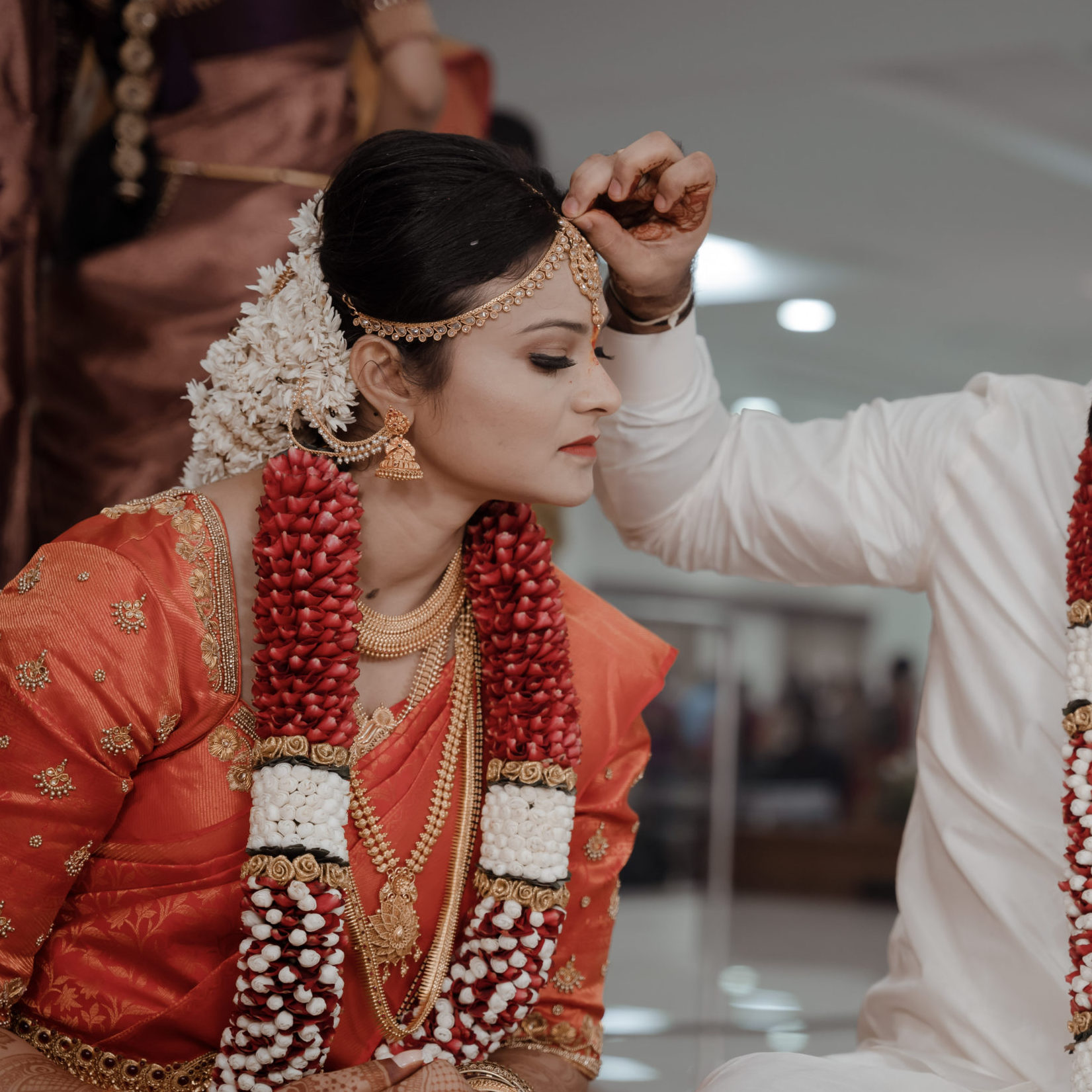India has remained in the history of the world for its vast rituals and age-old traditions. Every tradition followed by Indians has relevance to history or mythology. When elders bless a married Indian woman they say, “Be more like Parvati or Sati”. Now you may wonder who is Parvati or Sati. She is the wife of Lord Shiva. The reason why I am stating the above is because the blog I am writing today is about a very significant part of Indian women, it is on the Significance of Sindhoor in India.

The tradition was started by Parvati ( Lord Shiva’s wife) and has an identity even today among married women in India. Many of you may have noticed a red colour on many Indian women’s hairline; you may have asked or tried to gain information about it; Well; I am here to give you facts and folk tales about it.
That bright red color on the top of the Indian women’s hairline is the Sindhoor or vermilion.
What is the history behind Sindhoor? The Sindhoor Story (Significance of Sindhoor in India)
In India, specifically in Hindu tradition, a married woman is identified by the symbol of the bright red powder called the Sindhoor on her hairline. It is not just any powder it is a symbol of love, purity, and sanity. This is the Significance of Sindhoor in India, let us read more.

What are the main components of Sindhoor?
Here’s a little background about it. Sindhoor is a traditional vermilion red-orange colored cosmetic powder from the Indian subcontinent. Traditionally, it was made using more natural resources like turmeric, alum, or lime which are nontoxic elements.
Today, it is a cosmetic product and is made using chemicals and dye. However a mixture of the above-stated ingredients combined forms the Sindhoor. This gives it an orange-red tinge and is bright and long-lasting.
What is the scientific reason behind the use of Sindoor?
It has antiseptic properties and has a cooling effect, reducing stress and headaches.
Traditional ritual – Significance of Sindhoor in India
Our ancestors never did anything without a scientific reason. The same holds with the application of the Sindhoor. The Sindhoor is always applied in the center of the hairline and is a symbol of female energy.
What is the purpose of sindoor?
The main purpose of the significance of Sindhoor in India is as follows: the wedding ceremonies in India are a celebration, with so much grandeur and purity. The highlights of a wedding ritual are the exchange of garland, tying the sacred three knots, and the application of the Sindhoor by the husband to his wife.

A married woman then wears it regularly. Traditional folklore says that applying Sindhoor on the hairline means, she will think only about being devoted to her husband.
Significance of Sindhoor in India in modern times like today
The next time you are in India you can quickly identify a married woman; just by looking at her forehead, the area where the red Sindhoor is applied. It not only represents a ritual but it is a respect to the Hindu tradition.
A global icon today Mrs. Deepika Padukone in her debut film in Bollywood had a very famous dialogue which goes like this “Eshwar ka ashirwad hota hain ; ek chutki sindhoor!, har suhagan ke sarr ka taj hota hain ; ek chutki sindhoor!;har aurat ka khwab hota hain ;ek chutki sindhoor!“. The translation in English of the above dialogue is as follows: “One pinch of vermilion/sindhoor is the blessing of god; one pinch of vermilion is the crown of a married woman; one pinch of vermilion is the dream of every woman“. This dialogue simply enhances the significance and the power of the Sindhoor to all married women in India.”
Is it really necessary to apply the Sindhoor on the forehead?
Wearing the Sindhoor has been considered a patriarchal norm in most Hindu households. It has been many a time debated “Whether to wear sindoor or not?”
We have seen many Indian women; be they entrepreneurs, politicians, stars, singers, athletes, anchors, or any Indian famous personality who have represented themselves as a married Indian woman by wearing the Sindhoor. Their application of the Sindhoor at international events has received accolades and admiration.
But folks! Indian tradition doesn’t force a married woman to follow wearing the red tint. It is a matter of choice and not compulsion.
In the contemporary age, many women wear the Sindhoor as a mark of safety and security to portray their marriage.
A Style statement – Sindhoor

Some women don’t really wear it on the hairline; they wear it on the forehead as a bindi (sticker) or even decorate the indoors with a bindi ( a sticker) or add some glitter as a style statement.
This simply indicates, that the love for tradition is still alive in the present generation and it’s only upgraded in style.
In the New York Fashion Week 2023, models wore ‘Sindhoor’ as they walked the runway wearing the fashion designer Prabal Gurung’s creations. That statement move by the ace designer purely indicates the Sindhoor is not just a powder but it’s a symbol of culture and style too and through him; has been revealed to the world.


Conclusion – Sindhoor is beautiful
As an Indian, I can proudly say, the Sindhoor is still in vogue and its power and sense of respect are unbeatable. Although it is mostly seen used in Hindu traditions, it still stands as a symbol of purity and marriage all over India. Let me leave you with a closing thought by saying “Only the chosen one gets to apply the Sindhoor and not everyone is lucky enough to wear that red line on the hairline.

Hope you enjoyed reading about the Significance of Sindhoor in India. Read more posts on Body Care here, Facial Care here & Hair Care here.
♥
Subscribe to Blog via Email
By submitting your information, you’re giving us permission to email you on the blog updates. You may unsubscribe at any time.
She is an artist by passion and a tax practitioner by profession. A writer for a living. She follows in simplicity as the way of life. To her style is being comfortable in what you wear.




Comments
Excellent subject, flawless language, beautifully written 👌👌👏👏👍